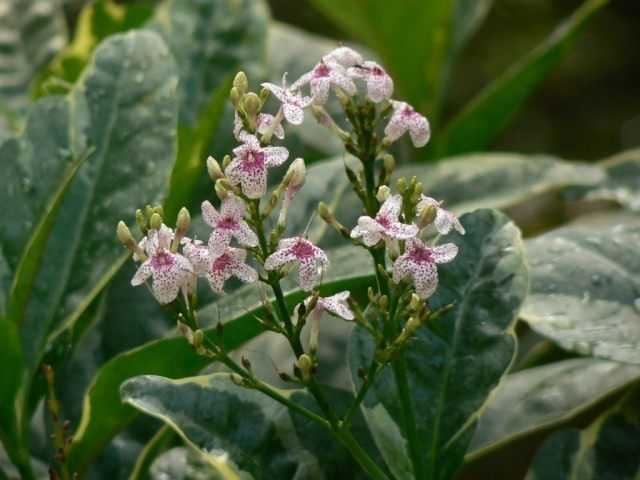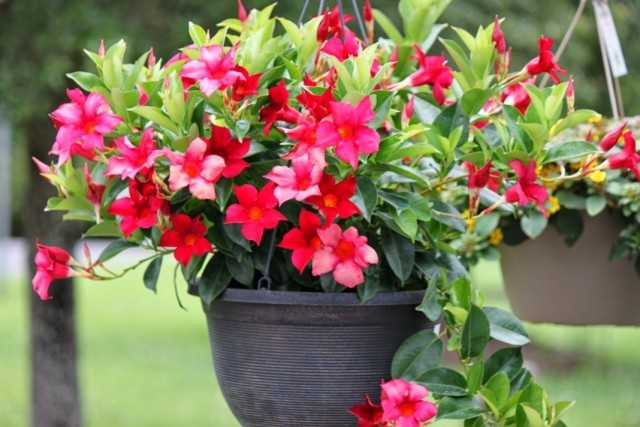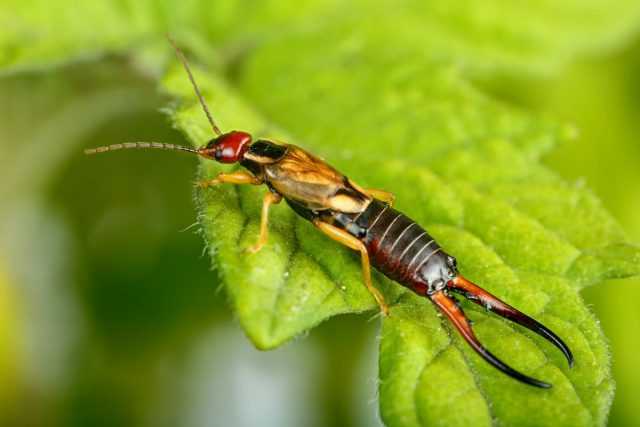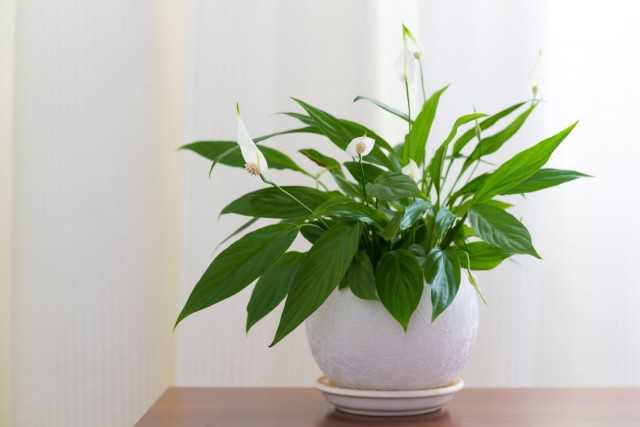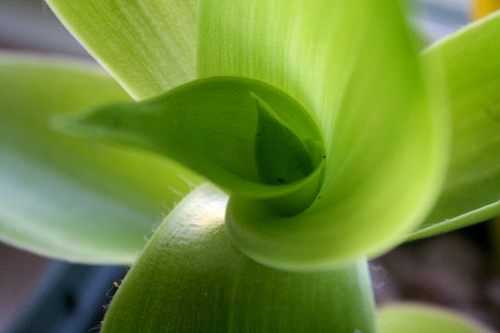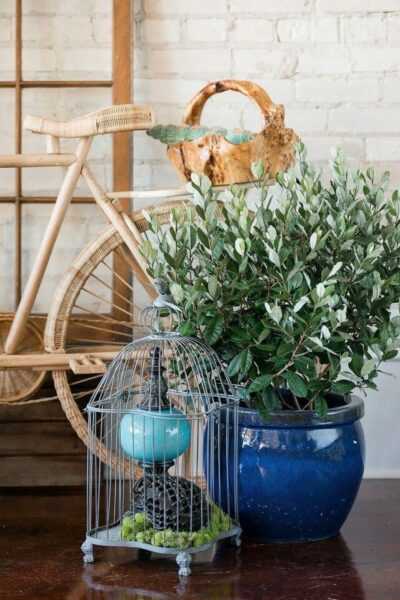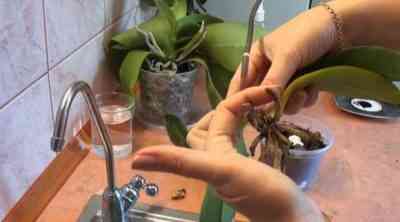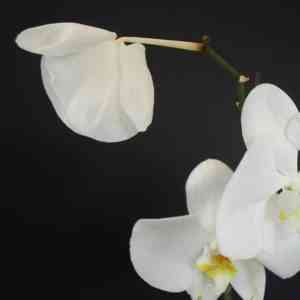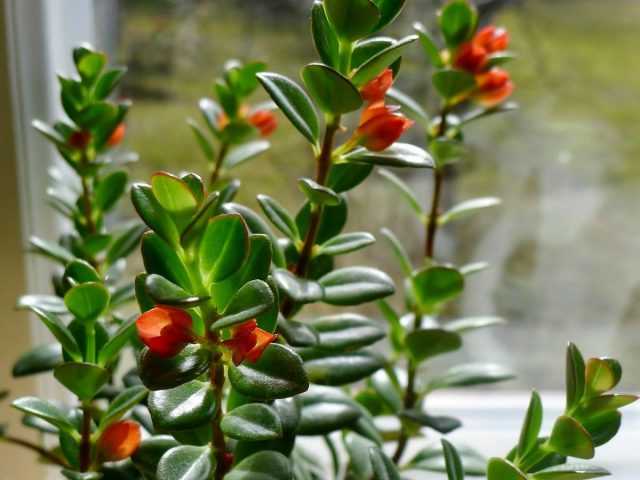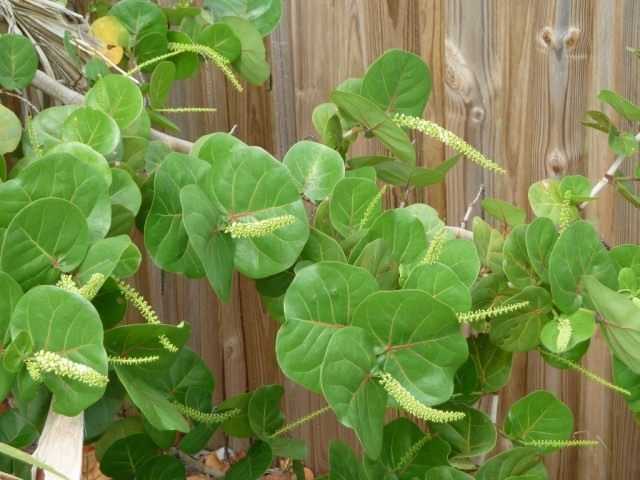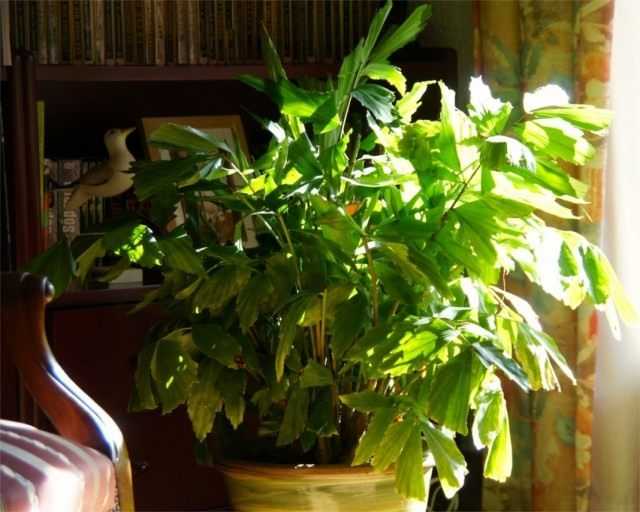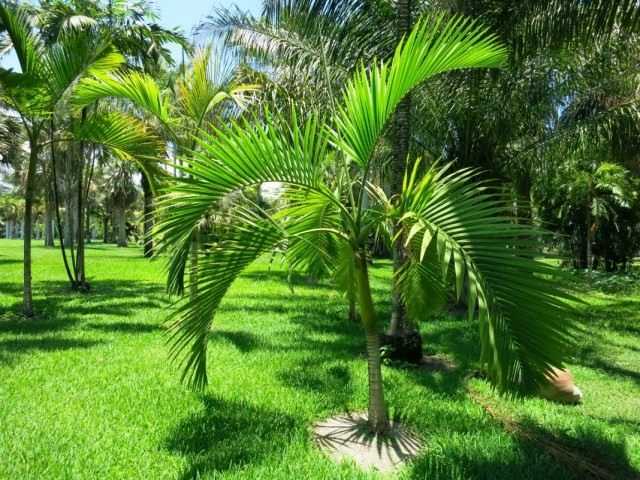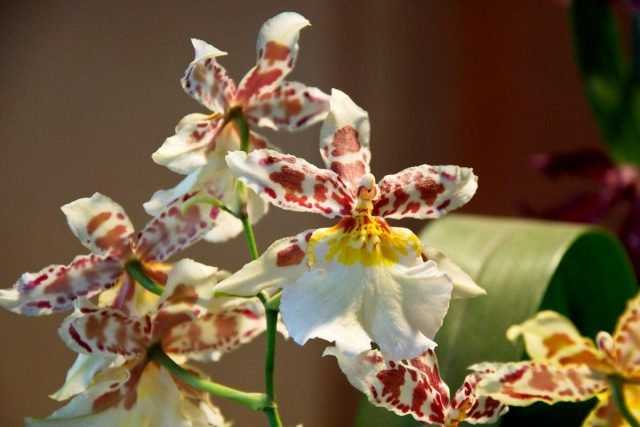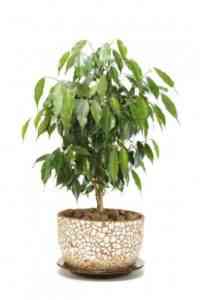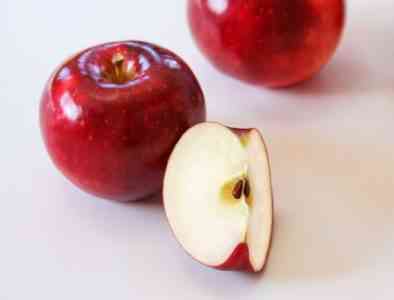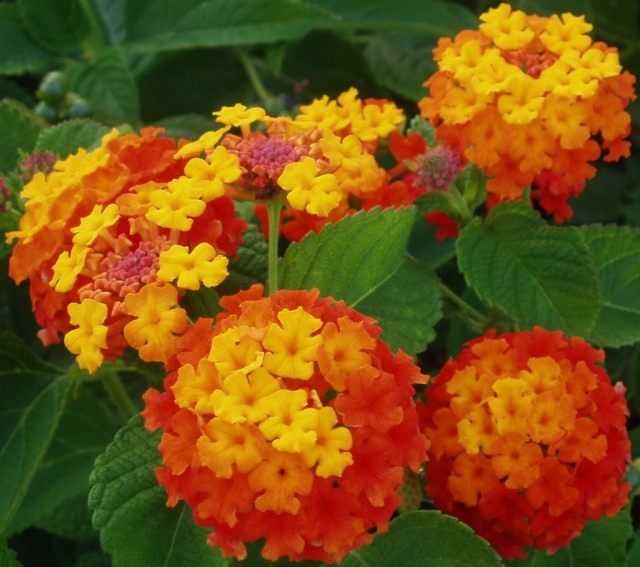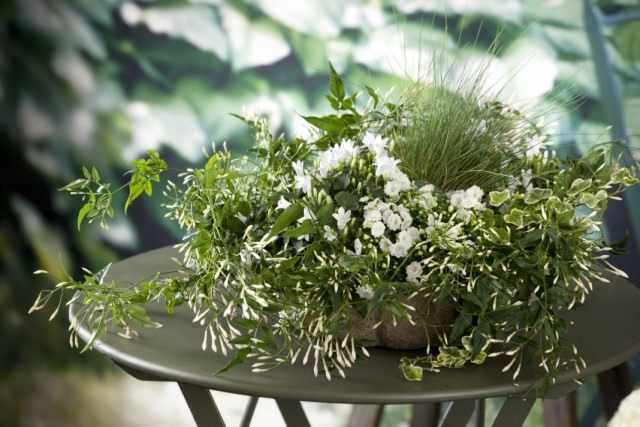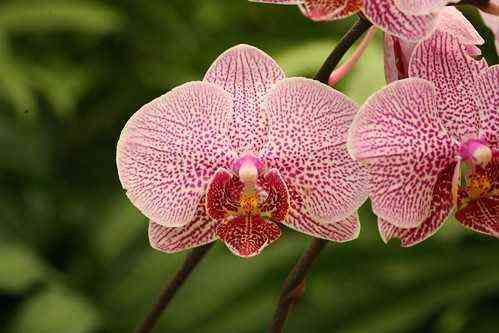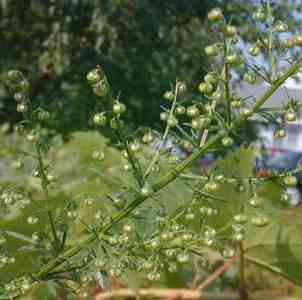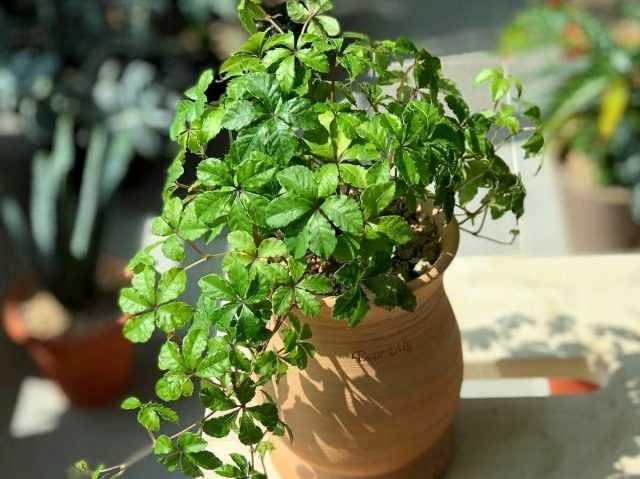Among indoor plants, there is no species with as bad a reputation as the monstera. In different decades, she was considered a “killer” and tried to oust her from the interiors because of the mythical bad energy and “vampirism”. But these dubious rumors do not diminish either the talent for improving the air, or the unique atmosphere brought by the ancient forest giant. Special and irreplaceable, Monstera conquers with giant leaves with slits, fast growth and grace. This undemanding indoor giantess is able to fit anywhere and withstand almost any conditions.
Monstera is a large-leaved giant with an unfairly bad reputation
Contents:
Giant liana with special leaves
The business card of the whole family Aroids (Araceae) monstera is a real indoor giant. She seemed to have migrated to the interiors from the primeval jungle. In a few years, a monstera from a modest shoot with a pair of leaves can turn into a real giant and easily overshadow even palm trees, barely fitting into the height of the ceiling. From her literally emanates primordiality, coolness and tranquility.
Monsters (Monstera) – tropical large-leaved evergreen vines. Even in rooms, they are able to grow up to 5 m without control (and with sufficient ceiling height). Plants produce powerful, but thin and unstable shoots and huge long-stemmed leaves that change shape as they grow. The long and thick aerial roots of the monstera only add charm to the plant: it is largely thanks to them that the monsters look like an ancient, relict interior decoration.
Leathery shiny leaves with perforation that made the monster famous do not appear immediately. Whole “young” plates are transformed into pinnately dissected, deeply cut huge leaves up to 50 cm in diameter and more. Cuts and windows appear randomly and unevenly, each sheet is absolutely unique. Monstera is characterized by the most forest palette of cold dark greens.
This is one of the poisonous plants: the juice of all parts irritates the skin and mucous membranes. It is better to handle it carefully.
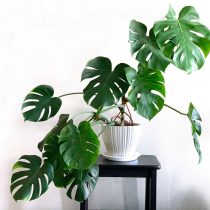
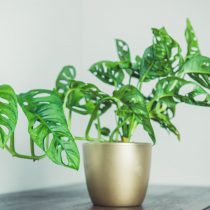

Types of indoor monsters
Basically, one type is found in interiors – monstera attractive (Monstera delicious). This is the most popular and largest liana up to 2 m high, combining sufficient bushiness and beautiful aerial roots with the presence of variegated forms and varieties with white and cream patterns.
Monstera Adansona (Monstera adansonii) Is an interesting compact species with thin shoots and elongated, oval-lanceolate leaves up to 40 cm in length with almost ovoid holes.
Monstera oblique (Monstera obliqua) is a spectacular rare species with lanceolate-oval, asymmetrical leaves up to 20 cm in length with a beautiful oval perforation.
Read also our article Monsters, anthuriums, caladiums – what do all plants of the Aroid family want?
Growing conditions for room monstera
The monster’s requirements are pretty modest. All they need for beauty and rapid growth is stable warmth and a bright place in cozy large rooms.
Lighting and placement
Monsters do not tolerate shade or direct sun. They grow well in any diffused lighting – in partial shade inside the interior. It will still not be possible to place them on the window sills due to their very large sizes, but within the framework of any light location at a not very large distance from the windows, the monster can be safely placed as a floor decoration, a concealer and a separator. The brighter the lighting, the larger the leaves and the brighter the perforation will appear on them.
Monsters do not like changing places; it is better to move and transfer them gradually and carefully, increasing the humidity of the air to compensate for stress.
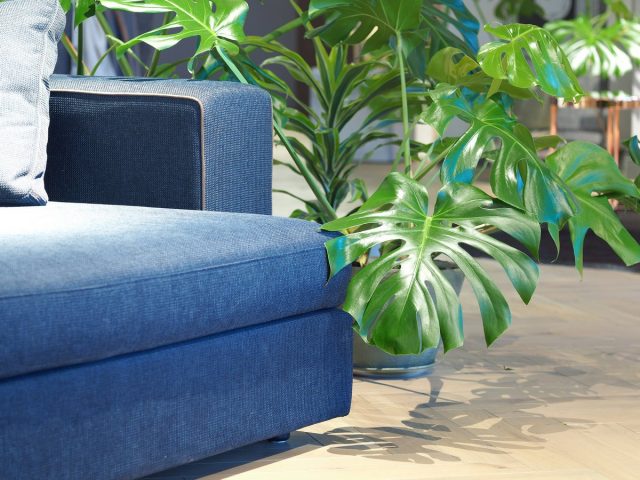
Temperature control and ventilation
Monsters do not react very well to temperature drops below 15 degrees and do not welcome the heat. Love for coolness allows them to be used to decorate the entrances to offices, corridors, halls, receptions, foyers, lobbies. Summer temperatures of 20-21 ° C and winter temperatures of 17-18 ° C are ideal for this large star. The heat is compensated for by more attentive care.
Monsters should not be placed on the balcony, let alone taken out into the garden. These are purely indoor plants that need to be left indoors in their usual place.
Caring for a monster at home
Regular grooming procedures without failures and extremes are all that this giant will need. Monsters prefer stability in everything.
Watering and air humidity
The monstera needs constant humidity. Drying between procedures is only the top layer of the substrate in pots – in summer up to 3 cm, in winter – up to ¼ depth. Complete drying of the substrate leads to some loss of decorativeness by the leaves, but as an exception, it is permissible. But the monstera does not tolerate dampness, immediately reacting with blackening of greenery.
Unlike many Aroids, monstera tolerates dry air well. If temperatures do not rise above 21 degrees, it is enough to keep the leaves clean by regular washing and monitor the soil moisture. In the heat, it is better to raise the humidity by spraying the monstera more often or arranging more frequent wet “cleaning” for it.
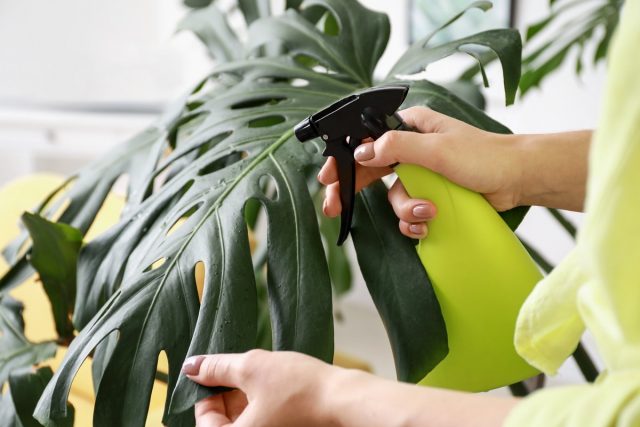
Top dressing and composition of fertilizers
The huge leaves of the monstera require considerable resources. These fast-growing giants are rapidly depleting the soil. Plant feeding should be carried out weekly or once every 1 weeks (with a half and full portion of fertilizers, respectively). If the growth for the winter stops completely, no fertilizing is applied, if the plant only slows down development, the frequency is changed by 2 time per month (with a halved dosage). For monstera, both special fertilizers for Aroids and universal fertilizers are suitable.
Trimming and shaping monstera
This plant needs a stable support, without which thin shoots with heavy leaves cannot rise to a height of several meters. The stems are rarely tied up as they grow.
When development slows down or the maximum permissible size is reached in adults, the monster is cut off the top, stimulating the growth of lateral branches.
In no case should the monster’s aerial roots be cut off.
Transplant, containers and substrate
Monstera is transplanted only at the beginning of active growth, in March or April. The plant should not be disturbed once again: the transplant is carried out when the roots have nowhere to develop. After reaching the maximum volume of containers and in years without replanting, only an annual replacement of the topsoil is carried out.
The monster needs to be carefully loaded. When transplanting, you will have to monitor not only the root ball, but also the aerial roots, which should not be affected during this procedure. Long roots that reach the walls of the pots are best directed into the soil with their ends.
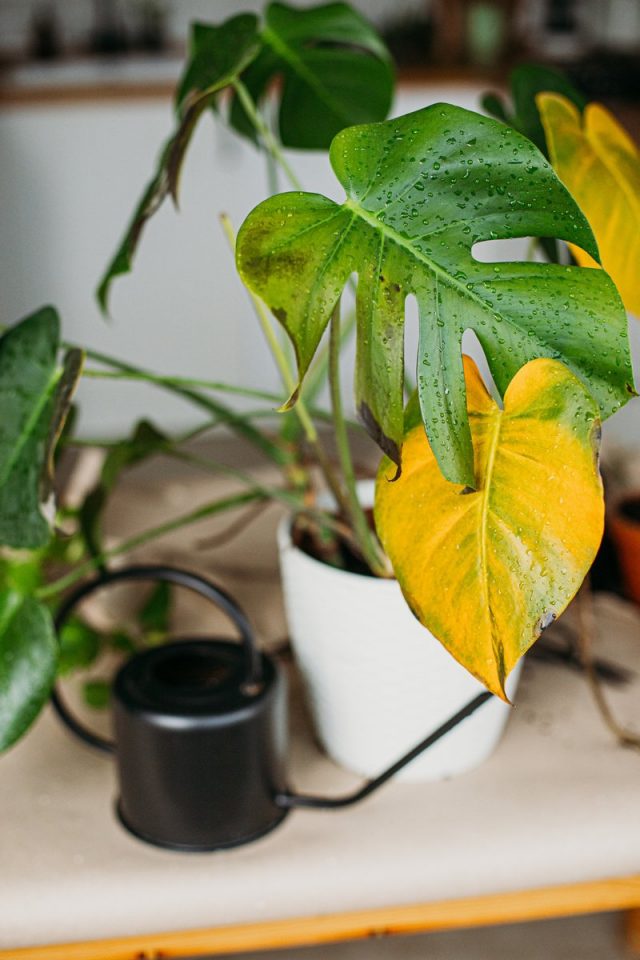
Diseases, pests and problems in growing monstera
Monsters very rarely attract pests, only in a neglected state they suffer from scale insects or aphids. But they react vividly to improper care:
- shedding leaves in the heat;
- lack of slots, twisting and pulling in the shade;
- blanching and yellowing of foliage in too bright light;
- chopping and dropping foliage in the shade.
The monstera does not tolerate the lack of fertilizing very well. The tips of its leaves rarely dry (only in extreme dryness and heat), but with any overflow, they can begin to turn black.
Read also our article 5 of the most spectacular houseplants with large leaves.
Breeding monstera
During spring and summer, you can cut off the tops of the shoots with a couple of leaves and aerial roots from the monstera, rooting them in the substrate at a temperature of 20 to 25 degrees and regular watering. It is not necessary to cover the plants with a cap.
These vines multiply quickly and air layers. The shoot in the internodes is incised and wrapped in moss or moist soil, fixing them on the stem in any convenient way.
This giant is rarely grown from seeds. For germination, it needs shallow sowing, very bright lighting and stable heat. Juvenile leaves will be replaced by genuine ones, with the first cuts, only after a year. It will take even longer to wait for the formation of the bushes: in the early years, the monsters release only a couple of genuine leaves.
